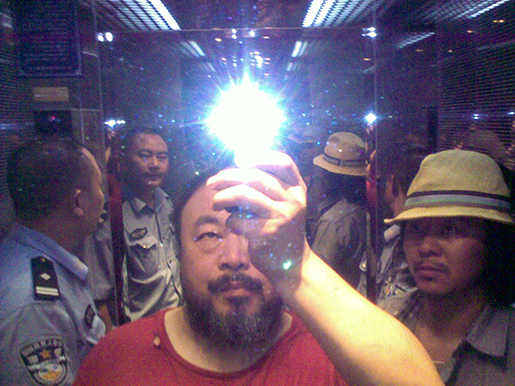The main work in the middle of the 21er Haus’ large exhibition hall represents the installation, Wang Family Ancestral Hall. It shows an ancestral temple from the late Ming Dynasty, whose main hall will be accurately reconstructed. The 14-meter tall wooden temple consists of over 1,300 individual pieces and will be presented for the first time outside of China. The old temple belonged to the Wang family, an important tee merchant clan from the southern province of Jiangxi. During China’s Cultural Revolution, the family was expelled and the temple left to deteriorate. Ai Weiwei bought the building from an investor and then carried it over into his artistic context. Removed from its original function, his process of translocation endowed it with new meaning. A decisive factor for the choosing of this work was the similarity of its history to that of the 21er Haus. Also originally intended to be destroyed, it was the Austrian pavilion built for the 1958 World’s Fair in Brussels that was relocated to Vienna and adapted to become the contemporary art museum we know today.
Two other works at the 21er Haus refer to China’s tea culture, thereby invoking the original proprietor of the ancestral hall. The Teahouse is made from pressed Pu-Erh-Tea. Spouts is an assembly of thousands of broken antique teapot spouts, which are spread like a carpet over the floor of the exhibition space.
In the park of the Upper Belvedere Ai Weiwei addresses the current refugee issues with the work F Lotus, an installation composed of 1,005 worn life jackets. Arranged in the shape of the letter F, each one of the 201 rings is comprised of five individual jackets, which float like lotus blossoms on the waters of the baroque ponds. This site-specific work is surrounded by Circle of Animals/Zodiac Heads, an ensemble of twelve bronze heads from the Chinese zodiac. The staircase of the Upper Belvedere is where Ai Weiwei has released three creatures into the air to roam. The delicate sculptures were made by hand in the style of traditional Chinese kites. Thin bamboo bars form the frame and are covered with silk. The figures are a representation of the many mythical creatures from the Shanhaijing ("The Classic of Mountains and Seas"), the oldest recorded collection of Chinese mythology.













































